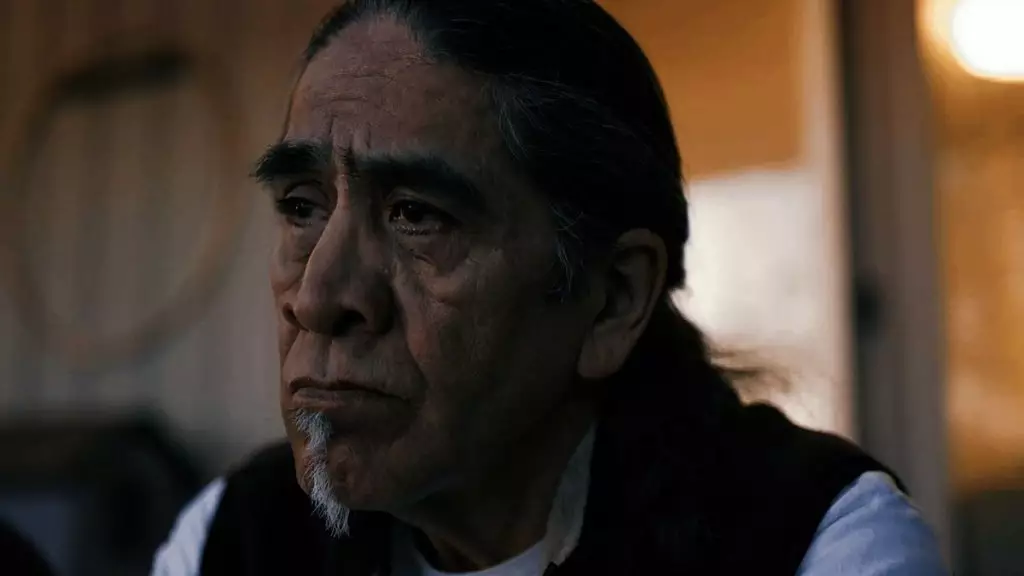Filmmakers Julian Brave NoiseCat and Emily Kassie have created a groundbreaking film that dives deep into the profound questions of morality and justice. Their documentary explores the intergenerational trauma inflicted upon the Williams Lake First Nations people by the residential school system. This system forcefully separated families, subjected children to physical and sexual abuse, and actively worked to destroy their culture and language. With a background in activism and journalism, NoiseCat and Kassie craft an emotionally charged narrative that sheds light on the enduring pain experienced by the survivors and their descendants.
What sets this documentary apart is the unwavering empathy displayed by the filmmakers towards the affected First Nation communities in North America. NoiseCat and Kassie approach this sensitive topic with a deep understanding and respect for the humanity of those who have endured unimaginable suffering. Their film operates from a place of pure and total empathy, reminding us of the importance of respecting our own humanity as well as that of others.
One of the 139 residential schools for Indigenous children in Williams Lake, British Columbia was the Saint Joseph Mission residential school. Like other schools in Canada, Saint Joseph aimed to assimilate First Nation youth into Euro-Canadian culture by forcefully removing them from their communities and suppressing their traditional languages, cultural practices, and identities. The school’s legacy is a tragic one, with former students reporting physical, emotional, and sexual abuse, as well as permanent separation from their families and the loss of their culture. The ruins of Saint Joseph Mission stand as a haunting reminder of a divisive colonial policy that robbed youth of their childhoods.
While Canada’s residential school system is well-known, it is vital to remember that other countries, including the United States, also perpetrated similar atrocities. In the late 19th to mid-20th century, Indigenous children in the United States were forcibly taken from their reservations and sent to government-run boarding schools. These schools, such as Pennsylvania’s Carlisle Indian School, aimed to assimilate native youth into Eurocentric society, enforcing discipline, manual labor, and forbidding the use of native languages. The parallels between the American and Canadian systems illustrate the widespread generational trauma caused by residential schools.
Julian Brave NoiseCat, whose father attended one of these boarding schools, provides a personal perspective that adds depth to the film’s exploration of collective harm and abuse. He intimately understands the lasting effects of forced family separation and the rampant physical and sexual abuse endured by children. Through his lens, the documentary reveals how violence inflicted on entire populations can lead to varying responses, from demands for justice to personal healing and even secrecy. The raw authenticity of NoiseCat’s personal connection adds a layer of emotional resonance to the film.
Despite the pain and horror detailed in the film, Sugarcane operates through humanity and empathy. NoiseCat and Kassie’s visual storytelling emanates deep solidarity with the Williams Lake First Nation, a community that continues to bear the scars of schools designed to erase their cultures. The documentary serves as a witness to the ongoing investigations into the missing children and helps bring the grief and suffering out of the shadows. The path towards reconciliation is complex, requiring a delicate balance between proper commemoration and protecting survivors from retraumatization. The filmmakers showcase the importance of allowing space for conflicting outlooks within affected bands, modeling a sensitive and community-centered approach to reconciliation.
In their powerful documentary, NoiseCat and Kassie provide a testament to the resilience of communities that persist in seeking reparations for the harms inflicted by residential schools. Despite these attempts to eradicate their existence, the Williams Lake First Nation has endured, driven by the empathy and determination of their people. The film serves as a rallying cry for a much-needed resolution and reparations for the survivors of this dark chapter in history. Through their storytelling, NoiseCat and Kassie shed light on the urgent need for justice and healing. Only by acknowledging the past and confronting its painful truths can we hope to move forward as a compassionate and just society.

Leave a Reply